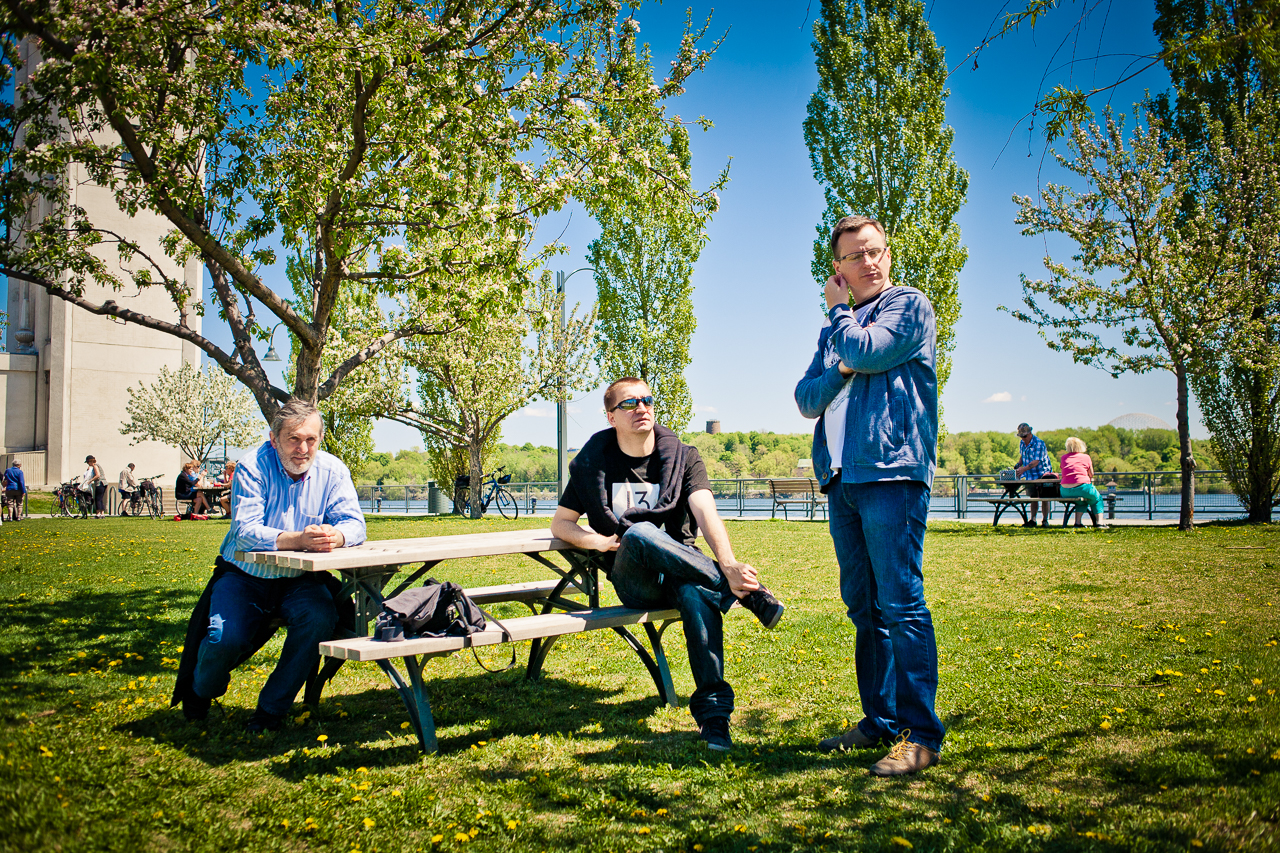Two of our group members are laureates of the prestigious Marie Skłodowska-Curie Actions Individual Fellowships. Their postdoc position will be realized in University of Cambridge (Prof. Oren Scherman Group) and EPFL (Prof. Michael Grätzel Group). More info below.

Prof. Janusz Lewiński proud of his apprentices Daniel Prochowicz and Kamil Sokołowski. Photo: Piotr Krupiński.
ESTIMABLeNANO: External Stimuli TrIggered Self-asseMBLy of DyNAmic NaNOmaterials
Time: April 2016 – April 2018
Place: University of Cambridge, Department of Chemistry, Melville Laboratory for Polymer Synthesis
Supervisor: Prof. Oren A. Scherman (group website)
Laureate: Kamil Sokołowski
The external control of self-assembling systems has attracted considerable interest, as it does not require additional components and triggering can be easily achieved in a completely remote manner where and when required.
The main goal of the project comprises the development of multi-stimuli (i.e. photochemical, electrochemical, temperature) responsive supramolecular systems based on nanoparticles (NPs) and their subsequent use in the reversible, controlled assembly of complex organic-inorganic architectures in aqueous media. This will be accomplished by employing one of the most promising self-assembly motifs based on the barrel-shaped cyclic oligomer of cucurbit[8]uril (CB[8]) that can bind within its cavity external stimuli (ES) responsive molecules, i.e. derivatives of viologen (MV) and/or photochromic second guest molecules displaying light-control binding affinity for a MV•CB[8] complex.
In the first stage of the project a variety of NPs functionalized by ES-sensitive derivatives will be prepared, which will be further used as nanostructured building units for ES-triggered self-assembly/dissembly of supramolecular discrete nanoparticulate systems and complex organic-inorganic architectures. The main aims of this proposal concern development of: (i) systems based on NPs functionalized by ES-sensitive ligands, (ii) ES-triggered synthesis of supramolecular discrete nanoparticulate systems, and (iii) multi-stimuli responsive self-assembly of hybrid organic-inorganic networks. The collected knowledge will be crucial for further investigations on physicochemical processes and phenomena, which can be achieved via employment of these novel dynamic self-assembled systems like: (i) ES-triggered changes in viscosity, (ii) variable charge transfer in dynamic self assemblies, (iii) dynamic trapping and release of biological active species, (iv) selective NP trapping and separation, (v) dynamic processes in self-healing materials. The results of the project hold potential applications in materials science, energy conversion, drug-delivery systems, hybrid electronics and catalysis.
MatchForSolar: Mechanochemical Approach to Inorganic-Organic Hybrid Materials for Perovskite Solar Cells
Time: September 2016 – March 2018
Place: École polytechnique fédérale de Lausanne, Laboratory of Photonics and Interfaces
Supervisor: Prof. Michael Grätzel (group website)
Laureate: Daniel Prochowicz
Solar energy is one of the most abundant and renewable energy sources that have minimum harmful impact on the environment compare to other sources like fossil or nuclear energies. An ideal solar cell requires low-cost, trouble-free, abundant material resources with good stability and high power conversion efficiency, also competent to integrate into large area. More recently, a research interest from the photovoltaic community has concentrated on organic–inorganic halide perovskites and nowadays perovskite solar cells represent an emerging photovoltaic technology. These ambipolar semiconductors have attracted increasing attention due to their easy fabrication process and unique physicochemical properties like small band-gaps and high carrier mobility. The inherent and unique physicochemical properties of perovskites are dependent on a variety of factors, including chemical composition, homogeneity, crystallinity and grain size-dispersion. All these factors are largely determined by the synthetic procedures used and sustained efforts have gone into the development of new efficient methods for perovskite preparation. Recently, chemical transformations driven by mechanical forces have appeared as a new emerging methodology in materials science. The mechanochemical reactions in solid state offer a significant advance by avoid the use of solvent, dramatically shortening synthesis times and simultaneously increasing the purity and amount of product.
The main goal of this proposal is to develop mechanochemical methods for the preparation of a variety of organic-inorganic hybrid perovskites and their composites with metal oxides nanoparticles. Integral part of the proposal will be the fully physicochemical characterization and determination the stability in complex conditions of temperature and humidity for the resulted perovskite materials. Finally, these materials will be utilized and investigated as light-absorbing materials to fabricate solar cells.